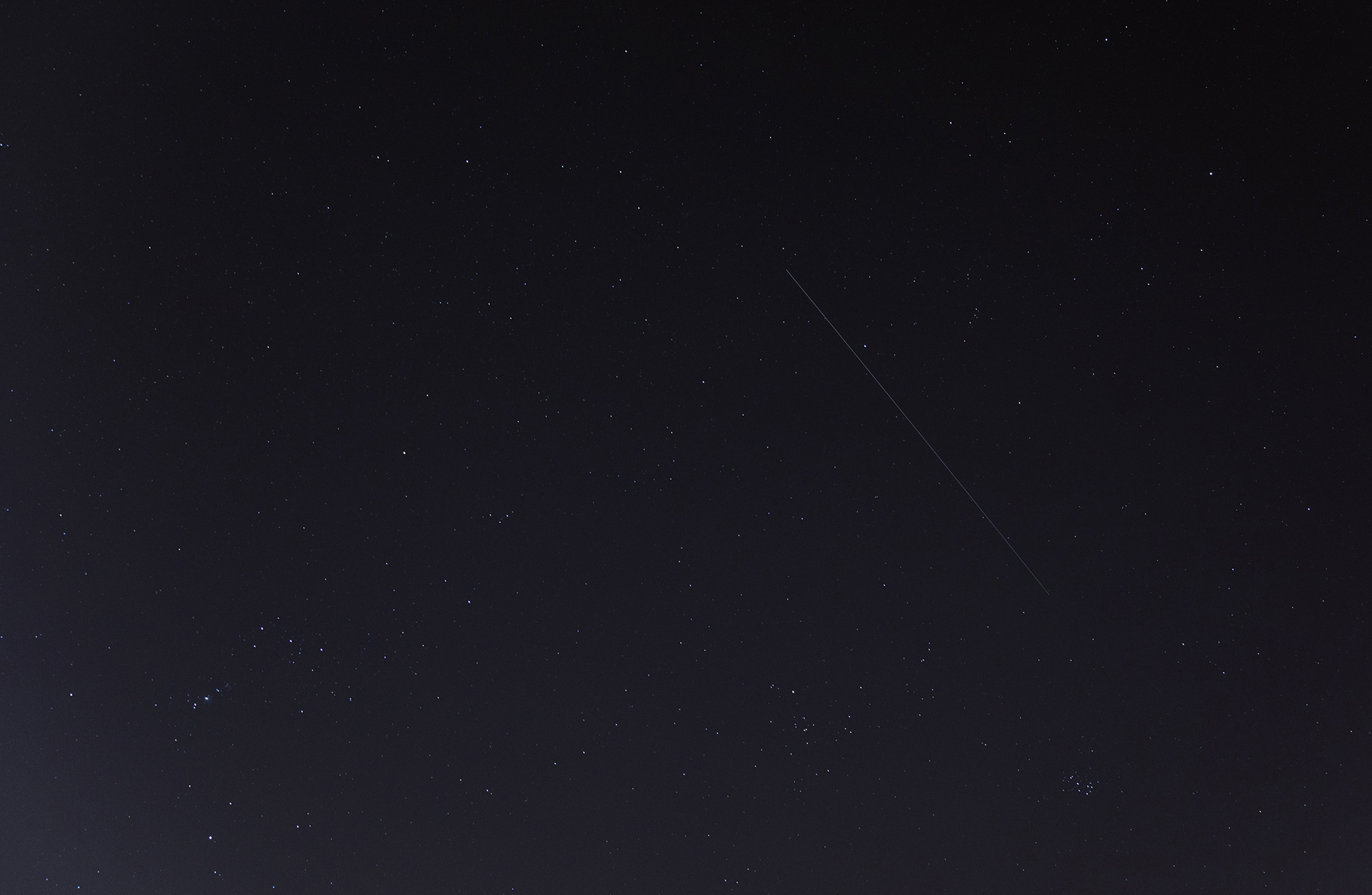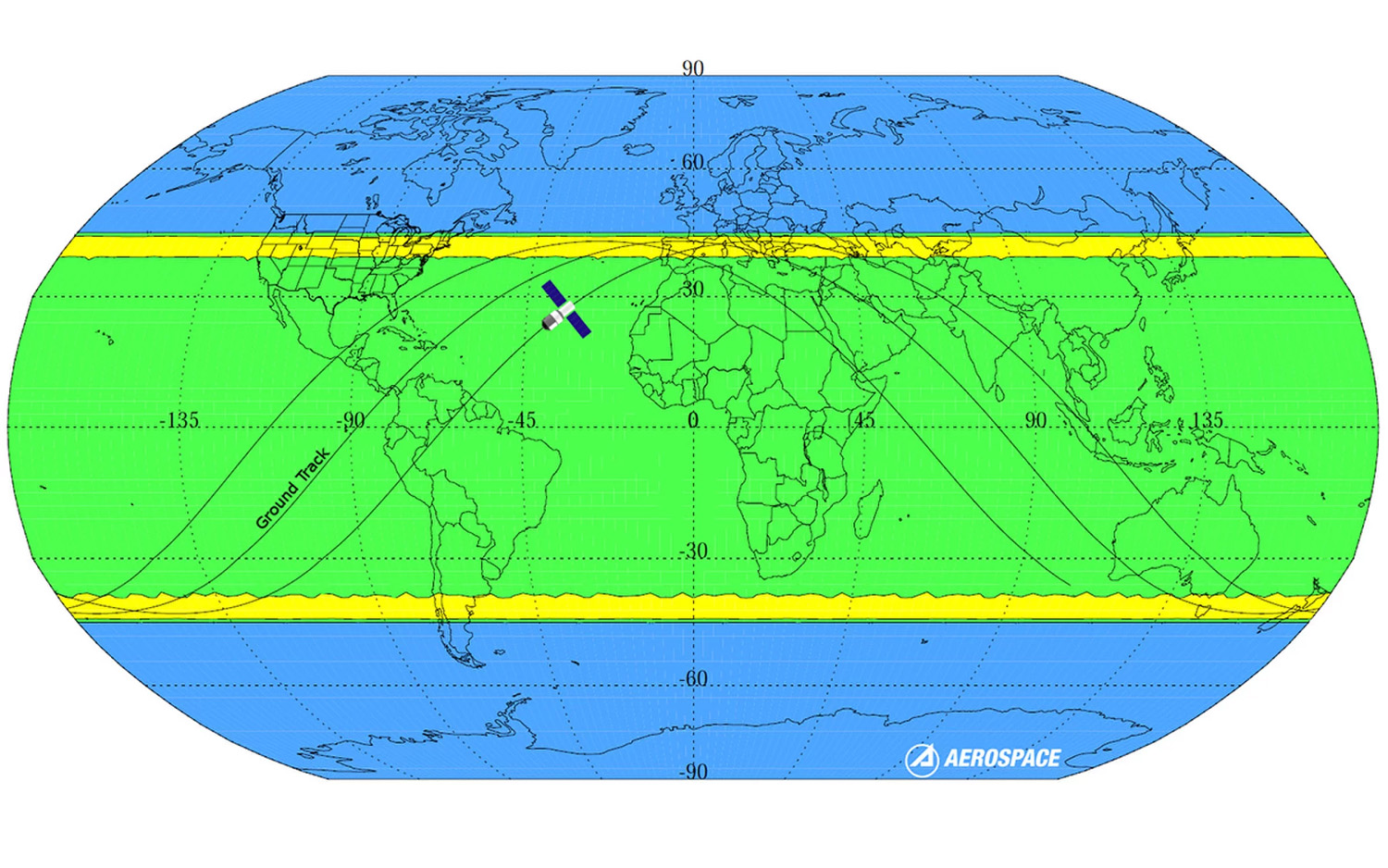Here's How to See the Chinese Space Station's Final Orbits and Fiery Fall
China's first-ever space laboratory, Tiangong-1, will fall to Earth within the next week and, weather permitting, you may get an opportunity to see it in one of its final trips around our planet. And, if you're very lucky, you might even get a chance to see it disintegrate into a fiery ball as it streaks across the sky.
The space lab launched on Sept. 29, 2011, from Jiuquan, China, and was christened Tiangong-1, which means "Heavenly Palace." A robotic spacecraft, Shenzhou-8, docked with Tiangong-1 in early November 2011, followed by two crewed missions: Shenzhou-9 in June 2012, and Shenzhou-10 in June 2013. Both missions carried three Chinese astronauts and lasted for two weeks.
On March 21, 2016, Chinese space agency officials announced that Tiangong-1 had officially ended its service and that the telemetry link with the spacelab had been lost. Shortly thereafter, U.S. satellite observers noticed that it appeared to be in a slow, uncontrolled roll as it circled Earth. It's been space junk ever since. [China's Space Station Crash: Everything You Need to Know]
Spacecraft trackers with the Aerospace Corp. predict Tiangong-1 will fall to Earth between early morning March 30 and early morning April 2, with Easter Sunday (April 1) among the likely targets. Tiangong-1 is currently circling Earth about every 88 minutes at an average altitude of 134 miles (215 kilometers) — about half the altitude of the International Space Station — and getting lower each day.
How to see Tiangong-1

First, if you'd like to see Tiangong-1 on Wednesday (March 28), you can watch this a free webcast from the Virtual Telescope Project led by astrophysicist Gianluca Masi at 8 a.m. EDT (1200 GMT). The webcast will feature live views of the space station in partnership with the Tenagra Observatories in Arizona.
If you want to see if Tiangong-1 will be visible to you, you'll need a sighting schedule for your location. For that, go to the Heavens Above website here.
When you go to this site you will be asked to log in. Once you register, all you need do is indicate your location. On the home page under satellites, you will find "10-day predictions for satellites of special interest." Tiangong-1 is second on that list below the ISS.
Get the Space.com Newsletter
Breaking space news, the latest updates on rocket launches, skywatching events and more!
Tiangong-1 is predicted to make passes sometime around the break of dawn over much of the United States and southern Canada from March 26 to April 3.
Among the features on Heavens Above is the ability to generate a sky map showing Tiangong-1's path among the background stars. Typically, it can range in brightness from 3rd magnitude to zero (as bright as the brightest stars).
Since Tiangong-1 is tumbling, watch for rapid changes in its brightness as it tracks across the sky. You are given the option of getting a schedule for only the visible (pre-sunrise) passes, or all the passes … that also includes those occurring during the daytime; a handy tool to have if you are hoping to catch a glimpse of the re-entry fireball (if it occurs within your viewing range).
You should frequently check Heavens Above for an updated sighting schedule; as the space lab gets closer to re-entry, the times of visibility could change noticeably.
As far as pinning down the time and location as to when Tiangong-1 will come down, this page at Satflare.com collects and compares different re-entry predictions with orbital figures and re-entry ground bands. Data will be updated many times a day.
Finally, to see the latest ground track of Tiangong-1 and where it is at a given moment, you can visit N2YO.com here.
When and where will Tiangong-1 actually fall?

As of this writing, the best predictions target Easter Sunday (April 1), plus or minus two days.
Part of this uncertainty stems from the fact that a very small error in the calculated height of the space lab at a given time can lead to a large error in the expected time and place of re-entry. Being large in cross-sectional area, at 34 feet in length and 11 feet in diameter (10.4 by 3.4 meters), but relatively small in mass, at 9.4 tons (8.5 metric tons), Tiangong-1 is sensitive to solar radiation pressure. [Tiangong-1: China's Falling Space Station in Pictures]
Moreover, the vertical extent of the atmosphere is affected by relatively small changes in solar activity, which cannot be precisely predicted. For example, the increased ultraviolet radiation associated with a solar flare heats the upper atmosphere, causing it to expand. This increases the drag on Tiangong-1.
As to where the space lab will make its final plunge, that, too, is a mystery.
Tiangong-1 is circling Earth in an orbit inclined 42.7 degrees to the equator, meaning impact of any associated debris can occur anywhere in a zone extending from between latitudes 42.7 degrees north to 42.7 degrees south. That would include about 80 percent of the contiguous United States and southern sections of Europe (Spain, Italy, Greece) as well as much of China and Japan. As for nations in the Southern Hemisphere, that list includes Chile, Argentina, Southern Australia and New Zealand.
Also unknown is just how much will be left of the space lab once it bursts into flames upon re-entering Earth's atmosphere.
The first serious damage will likely come when its orbital height falls to about 70 miles above the Earth's surface. The thin solar panels that resemble wings on either side of the cylindrical spacecraft will be the first to feel the effects of pushing against more and more molecules of air, ultimately breaking off.
In the following minutes, Tiangong-1 will likely tilt forward as the forces of friction increase. Somewhere between 40 and 50 miles up, the entire vehicle will become consumed in flames with large chunks breaking off, becoming scattered and breaking up into still smaller fragments.
Finally, at about 10 miles up, the falling fragments will lose their forward velocity and will rain almost straight down. According to a September 2016 report in The Guardian, Jonathan McDowell, the Harvard astrophysicist and noted spacecraft tracker, said: "There will be lumps of about 100 kg (220 lbs.) or so, still enough to give you a nasty wallop if it hit you. Yes there's a chance it will do damage, it might take out someone's car, there will be a rain of a few pieces of metal, it might go through someone's roof, like if a flap fell off a plane, but it is not widespread damage."
A spectacular end
Although it is still impossible to say precisely where Tiangong-1 will fall, scientists have a reasonably good idea of what the death throes of the Chinese space station will be like. [Biggest Spacecraft to Fall Uncontrolled From Space]
It should take less than 30 minutes, and during that time, the space station will sweep over roughly one-third of its final orbital trajectory. For those near and along that flight path, Tiangong-1's demise could result in a spectacular display, especially if it occurs at night.
Those who have reported seeing satellite re-entries in the past say the effect is similar to a slow-moving, fragmenting fireball meteor. The fragments will glow briefly because of intense friction in the upper atmosphere, then will die out. Even during the daytime, the breakup of Tiangong-1 might be partially visible as the largest pieces glow for a few moments like silvery skyrockets.
As an example of what might be seen, back on Sept. 6, 2001, the rocket body of a Kosmos 756 SB satellite, which had been orbiting the Earth since 1975, re-entered the atmosphere, giving early risers from North Carolina to New York a spectacular fiery display. Thousands of people jammed telephone lines to local radio and television stations and emergency hotlines to report the sighting of what initially was believed to be a dazzling fireball meteor.
Tom Kaminski, who reports morning-drive traffic for WCBS Newsradio 880 in New York, was walking out to his traffic helicopter in Linden, New Jersey, about 5:50 a.m. when the rocket body's re-entry caught his eye.
Kaminski described it as "looking like an aircraft that was on fire … it appeared to be trailing flames." He said that it appeared to be traveling rather slowly across the sky, taking fully 90 seconds to move from the southeast to the northwest. He also said that smaller pieces were visible, breaking off the main object. Finally, he said that it left a "long and distinct contrail which remained visible for at least 10 minutes."
Editor's note: If you see the Tiangong-1 space station's re-entry and snap a photo of video, let us know. You can share images and video with Space.com here: spacephotos@space.com.
Joe Rao serves as an instructor and guest lecturer at New York's Hayden Planetarium. He writes about astronomy for Natural History magazine, the Farmers’ Almanac and other publications, and he is also an on-camera meteorologist for Fios1 News in Rye Brook, NY.
Join our Space Forums to keep talking space on the latest missions, night sky and more! And if you have a news tip, correction or comment, let us know at: community@space.com.

Joe Rao is Space.com's skywatching columnist, as well as a veteran meteorologist and eclipse chaser who also serves as an instructor and guest lecturer at New York's Hayden Planetarium. He writes about astronomy for Natural History magazine, Sky & Telescope and other publications. Joe is an 8-time Emmy-nominated meteorologist who served the Putnam Valley region of New York for over 21 years. You can find him on Twitter and YouTube tracking lunar and solar eclipses, meteor showers and more. To find out Joe's latest project, visit him on Twitter.









